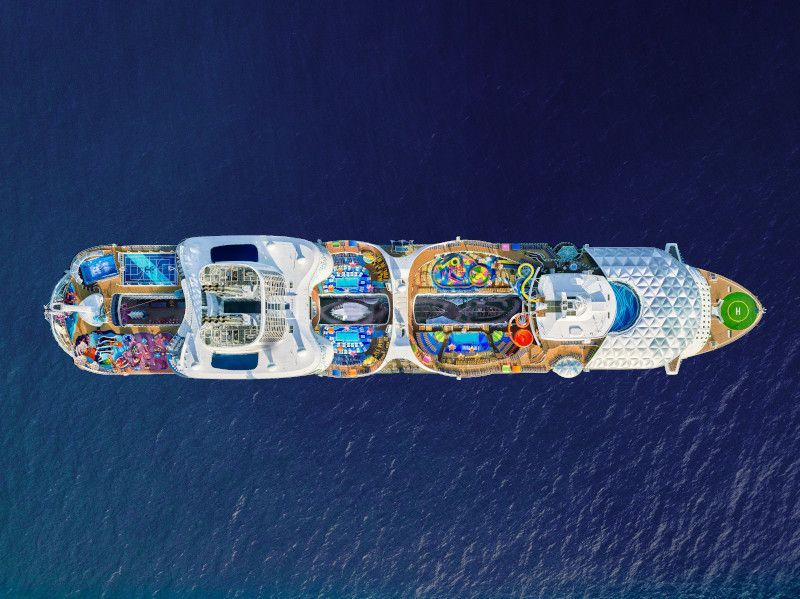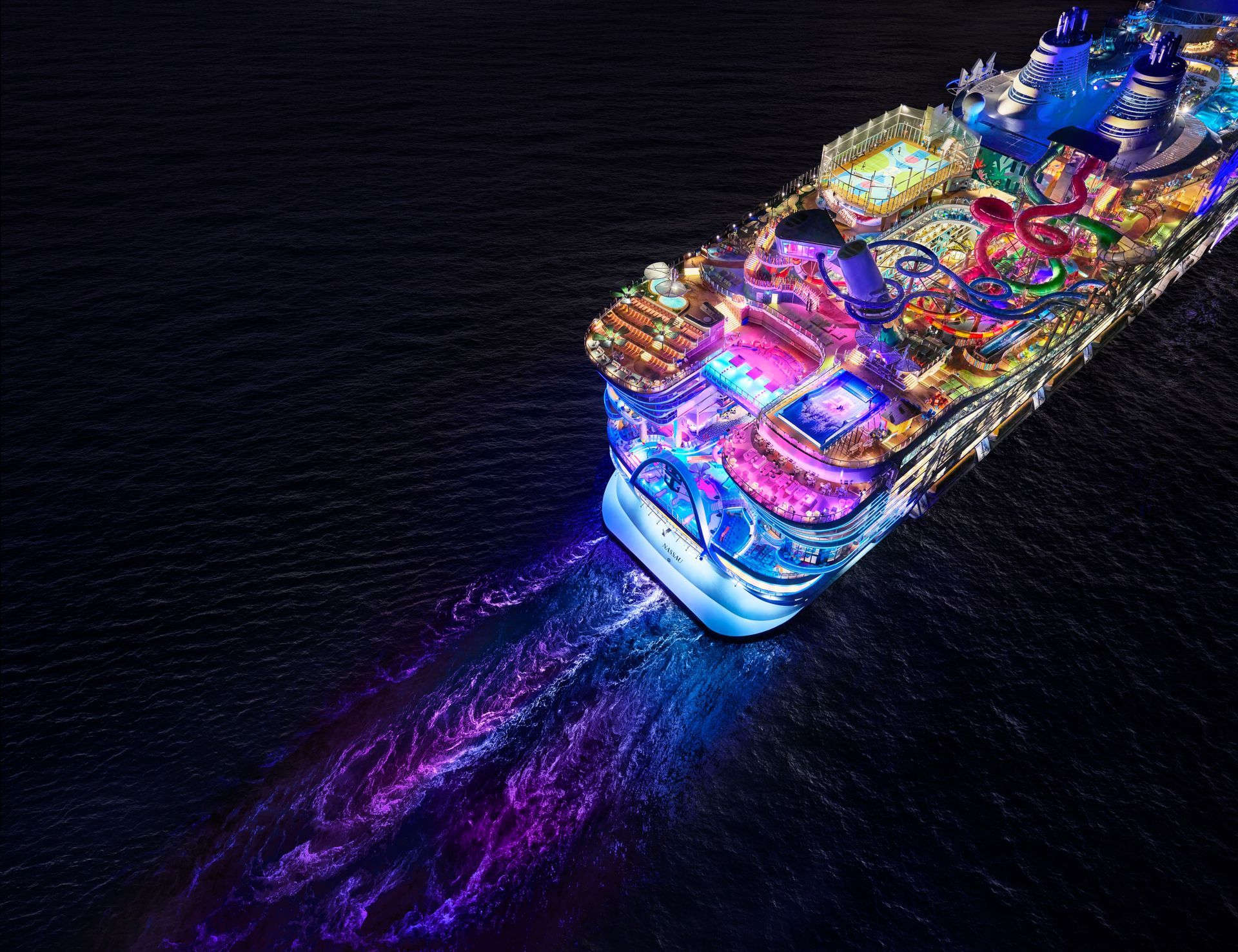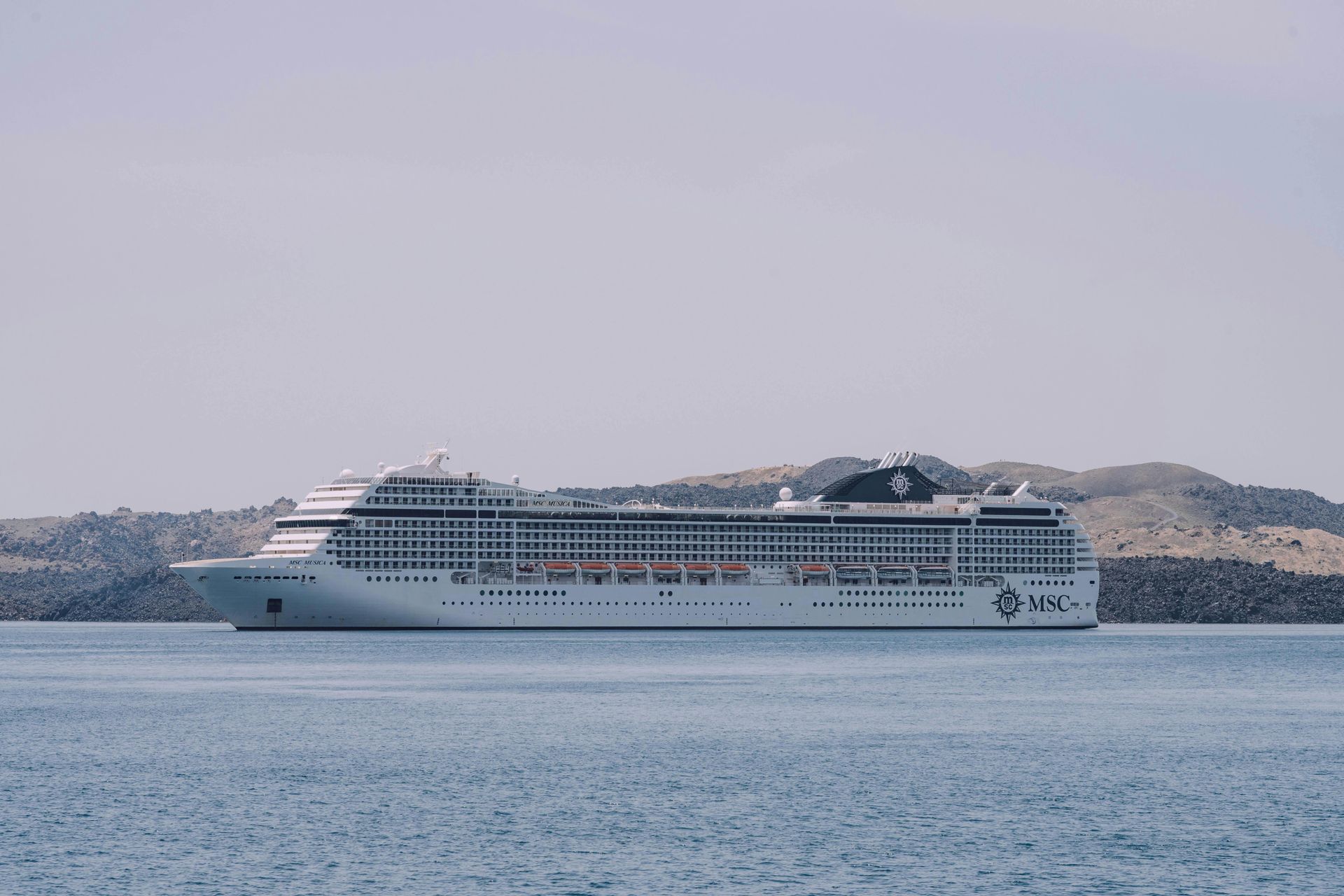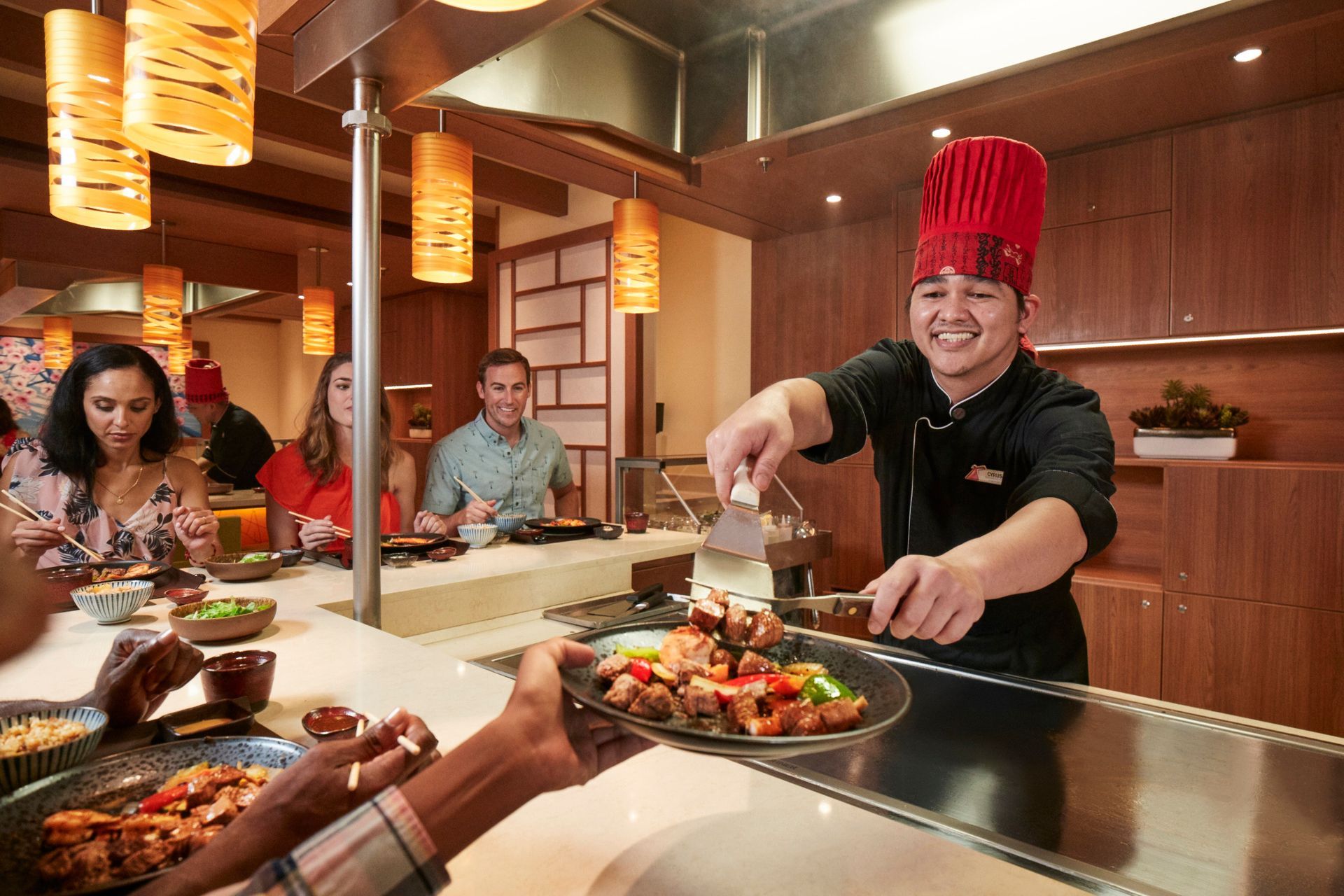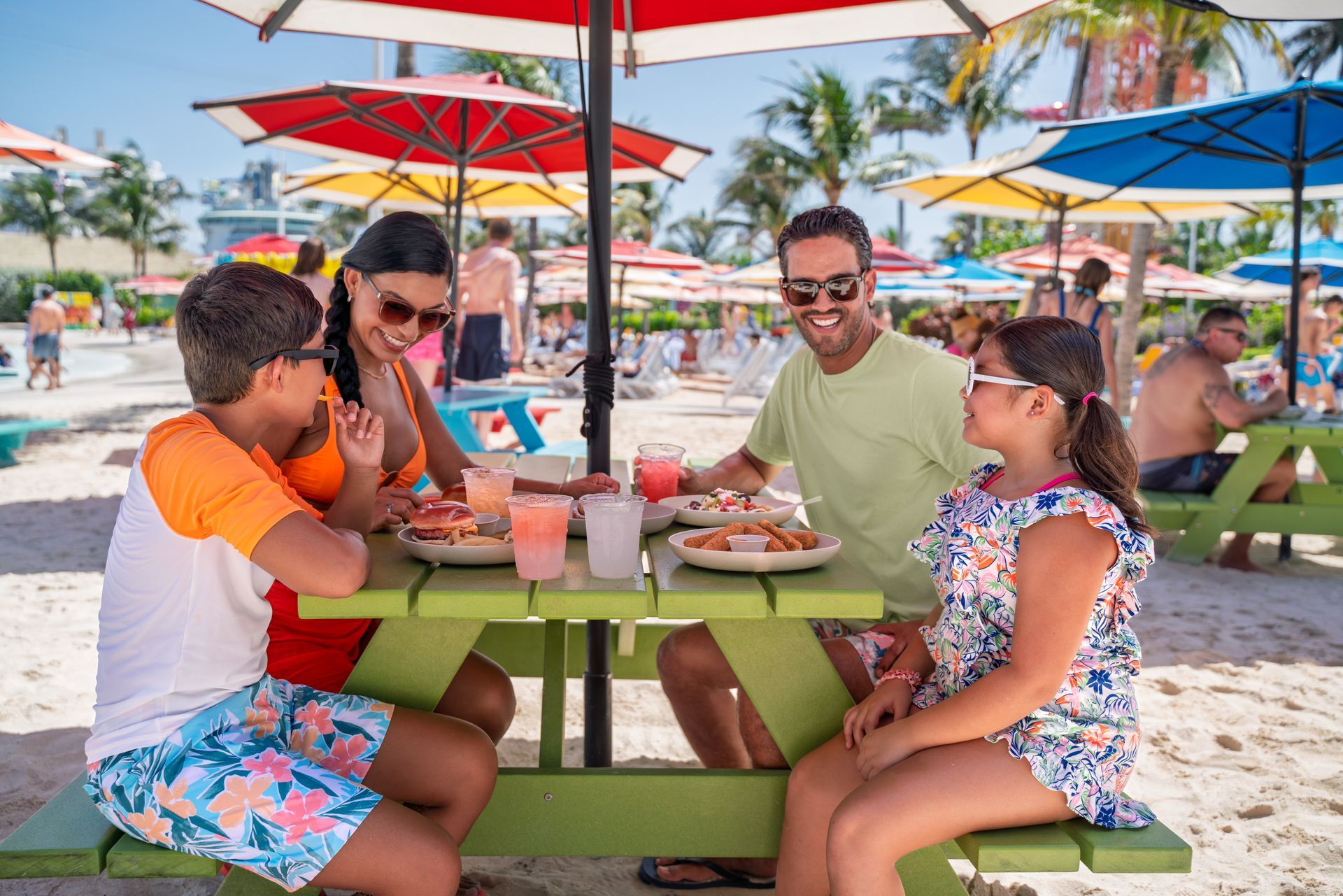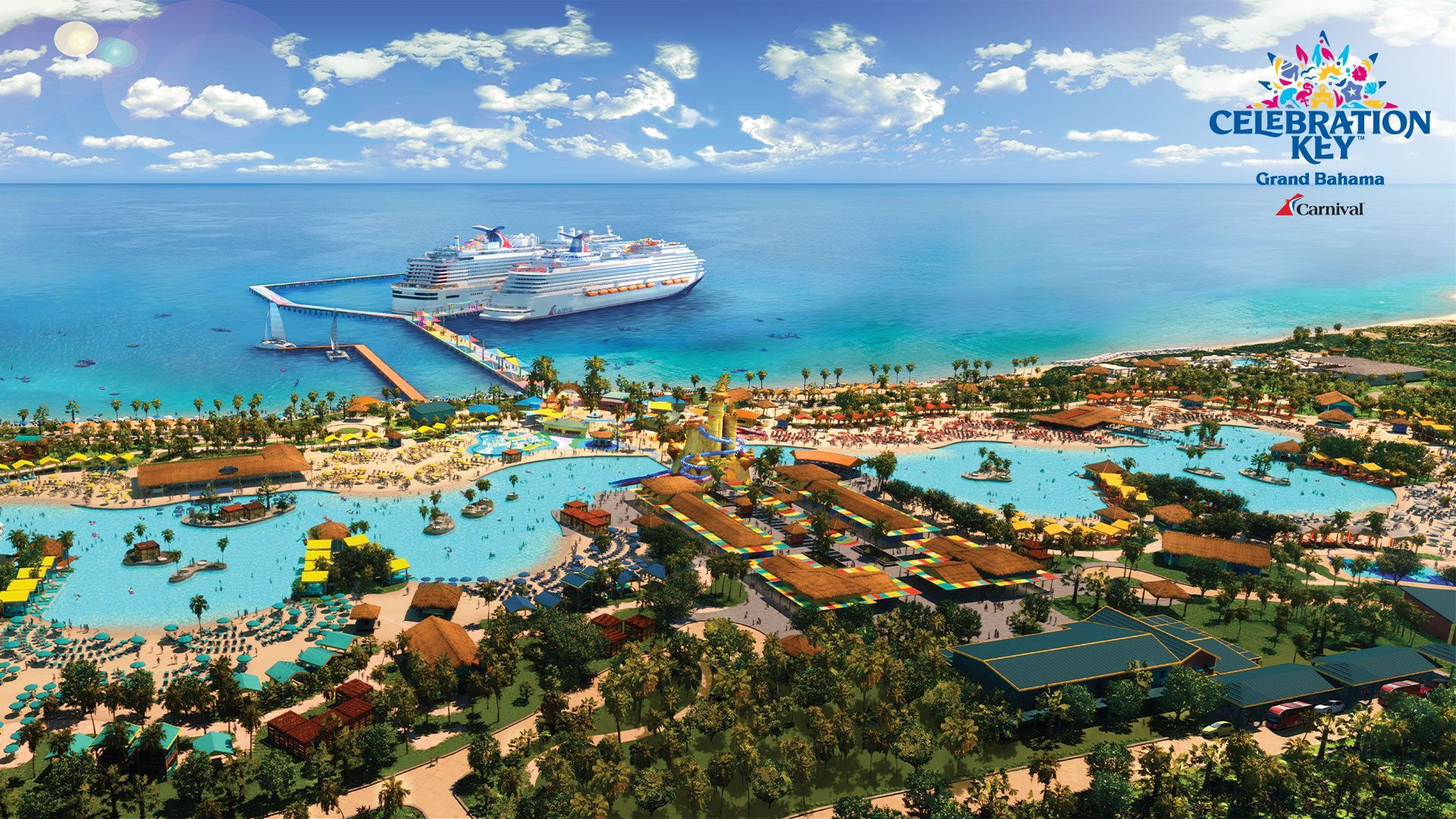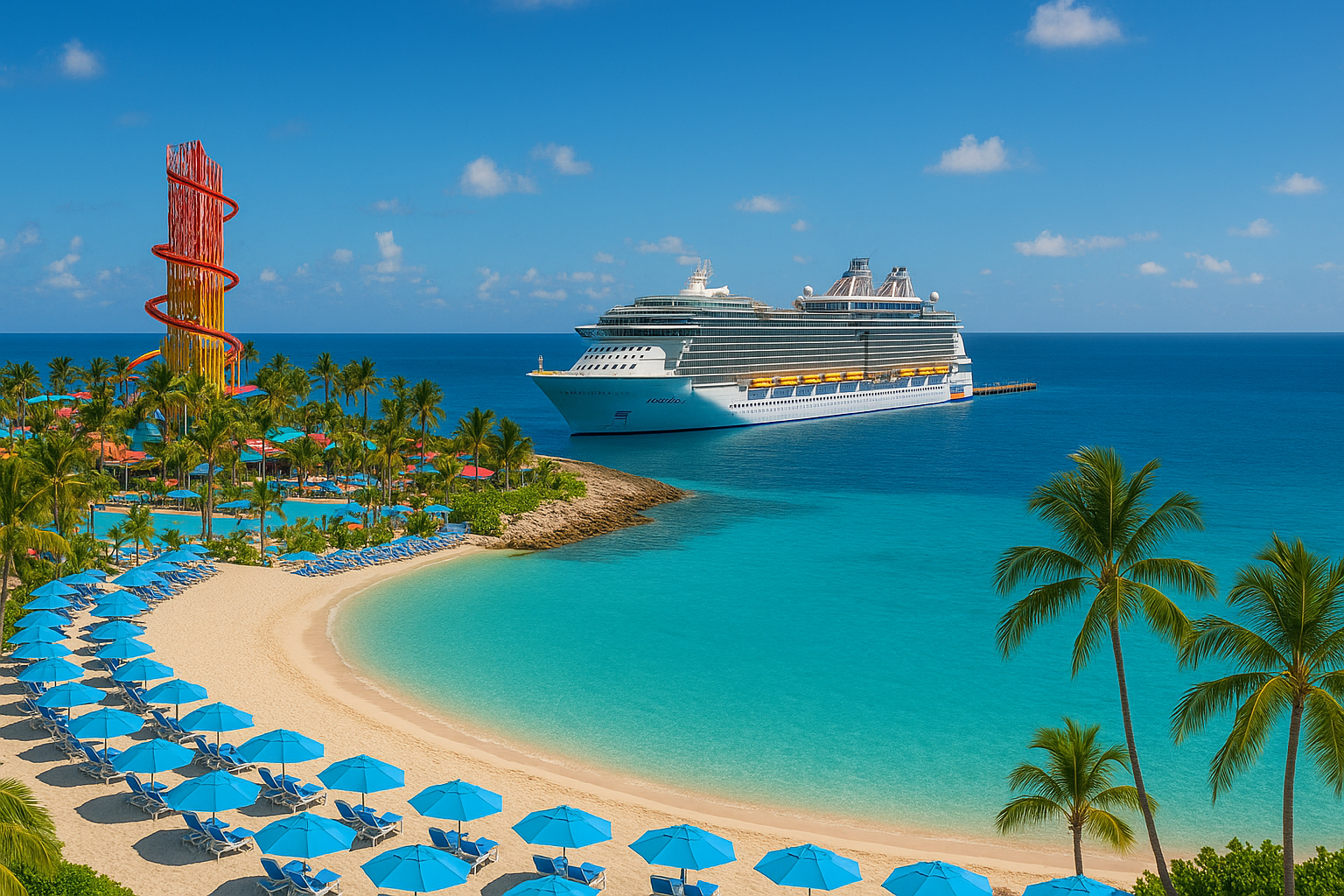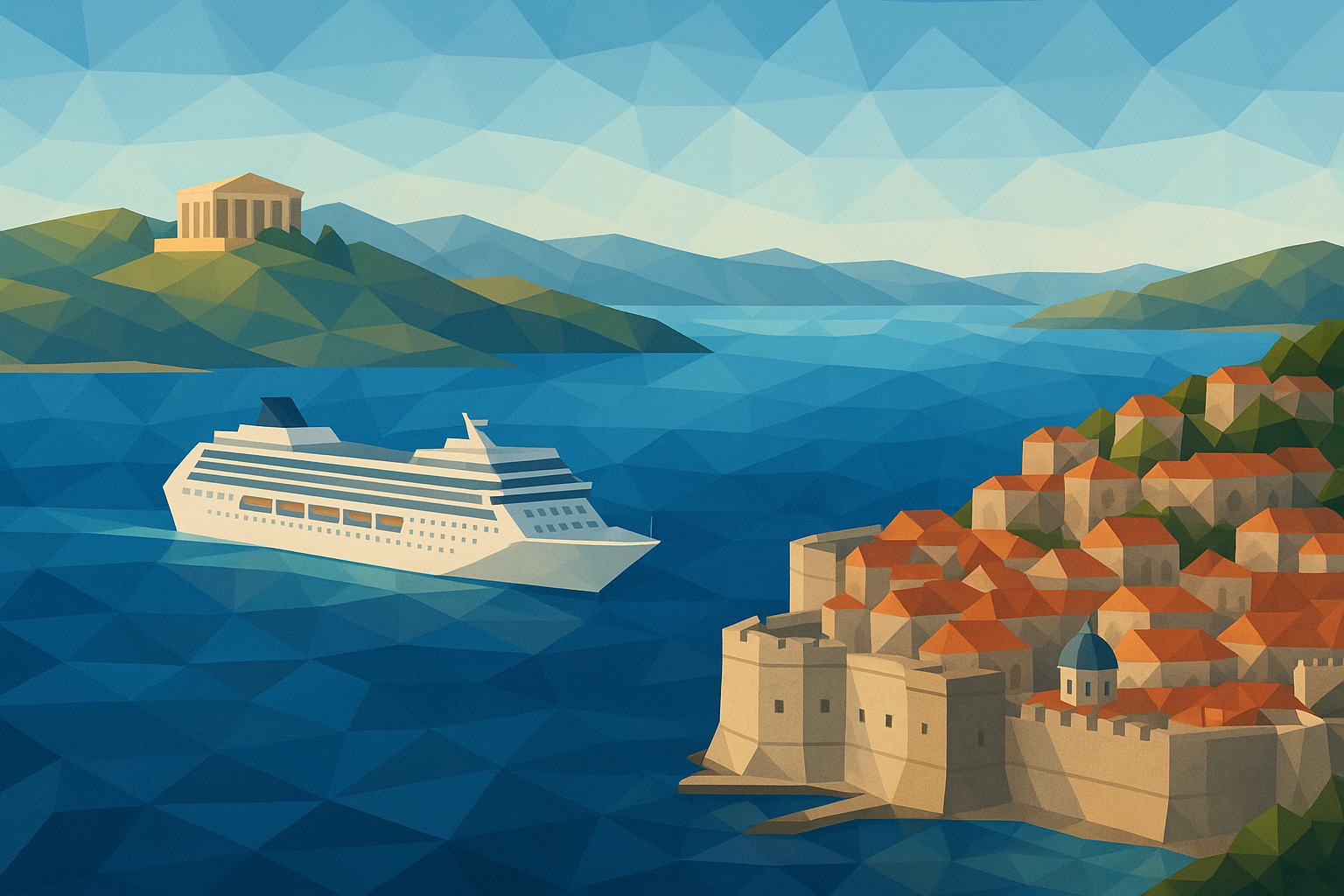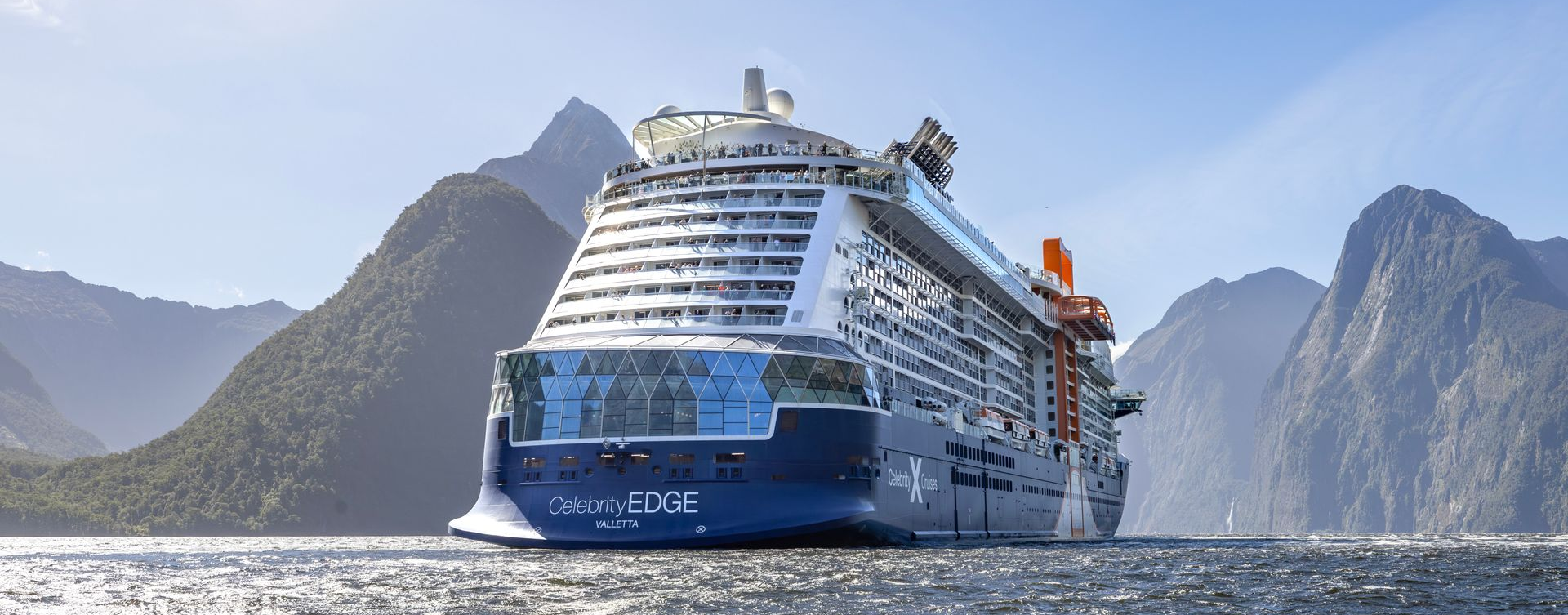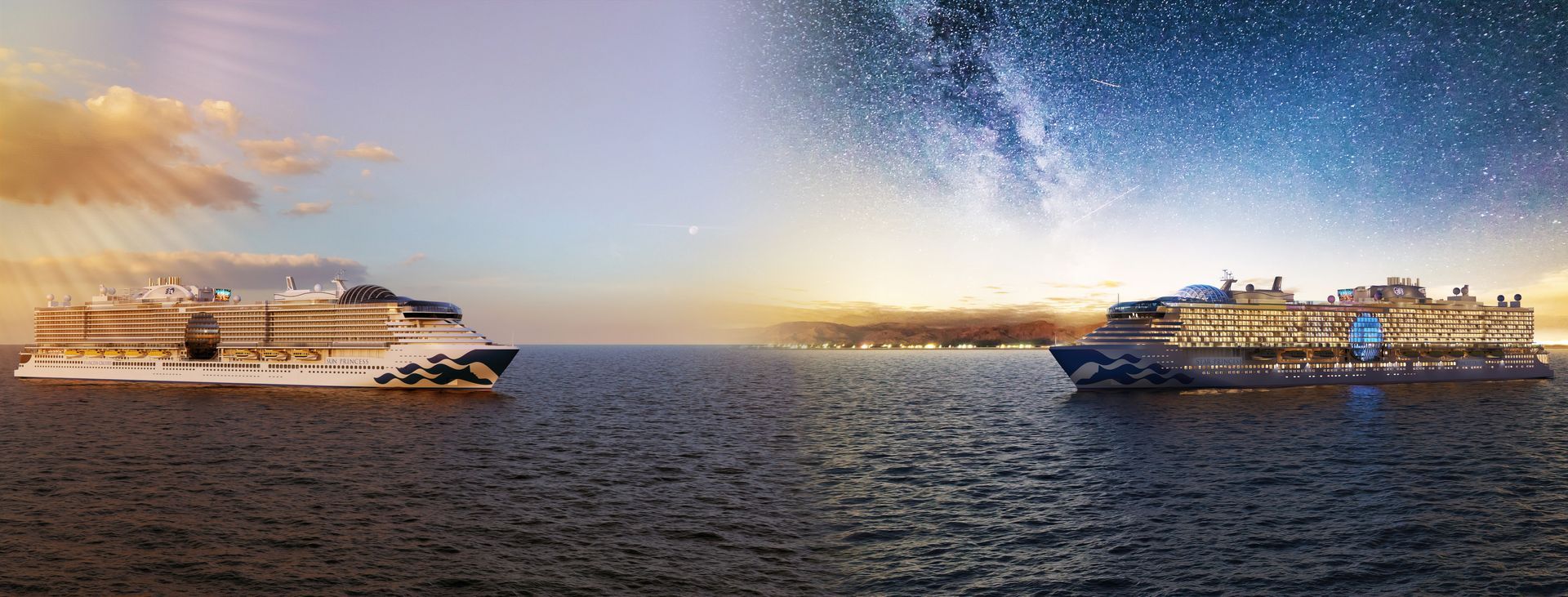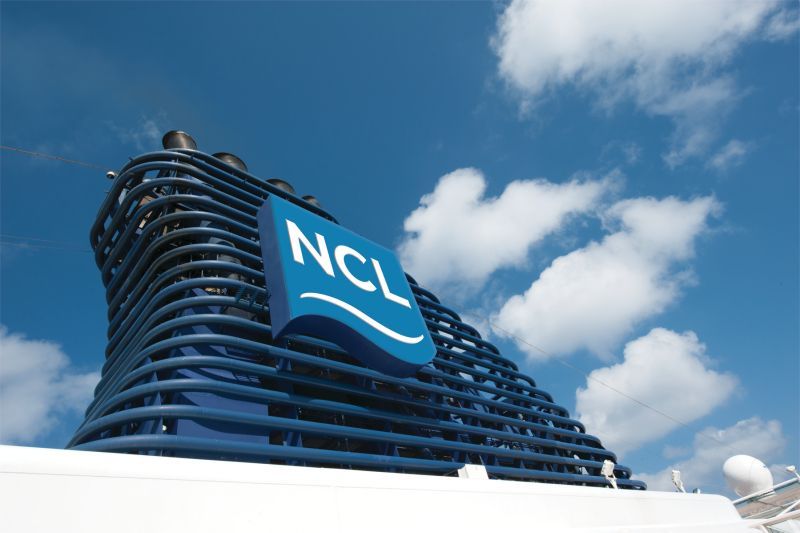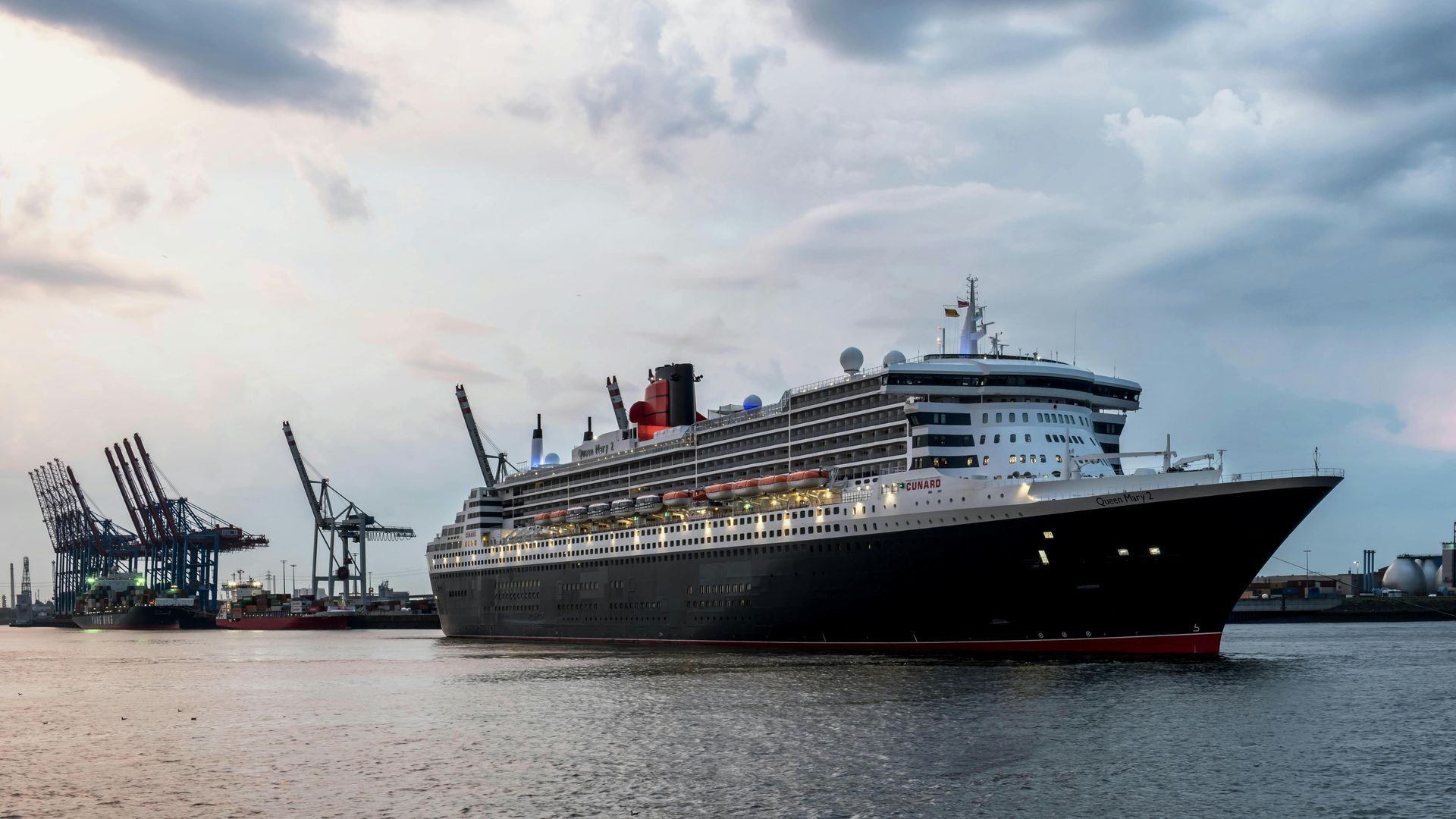Big Ship Excitement vs. Small Ship Charm—Making the Right Choice for Your Next Cruise
Choosing a cruise today is not just about the destination. It’s about the ship itself. Modern cruise lines now offer an incredible range of vessels—from mega ships that feel like floating cities to smaller, more intimate ships that prioritize charm and personal service. With so many options available, deciding between a massive vessel packed with amenities and a smaller ship with a cozier feel can feel overwhelming.
This guide will walk you through the differences between mega ships and smaller ships, highlighting the unique advantages and drawbacks of each. By the end, you’ll have a clearer idea of which cruise style best matches your travel personality, budget, and vacation goals.
What Defines a Mega Ship?
What Defines a Smaller Ship?
Atmosphere: Bustling Energy vs. Relaxed Charm
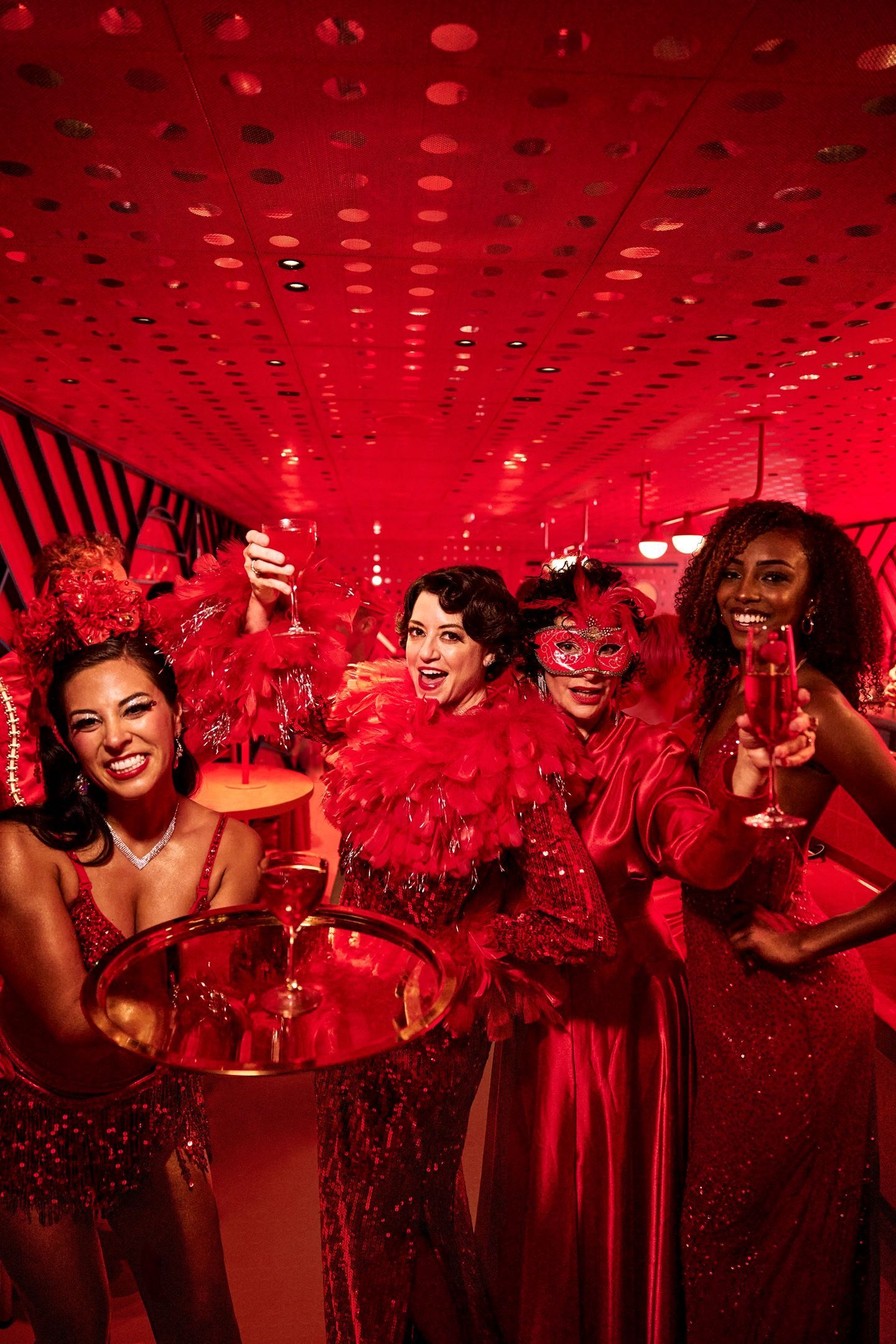
It is all about the atmosphere
Photos courtesy of Virgin Voyages
Button
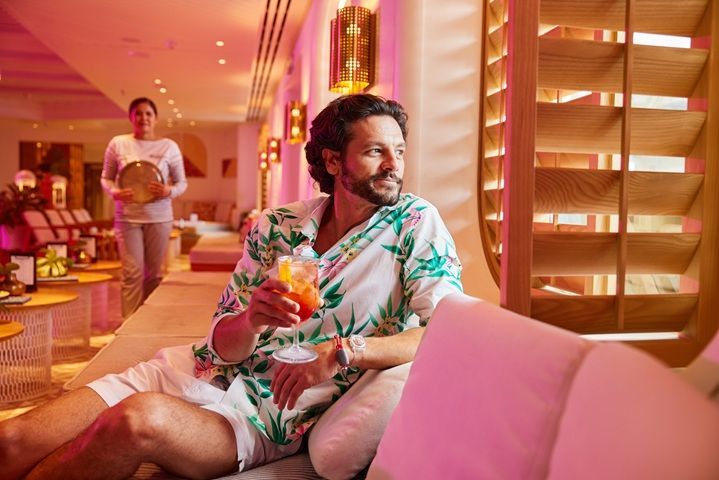
Slide title
Photo courtesy of Virgin Voyages
Button
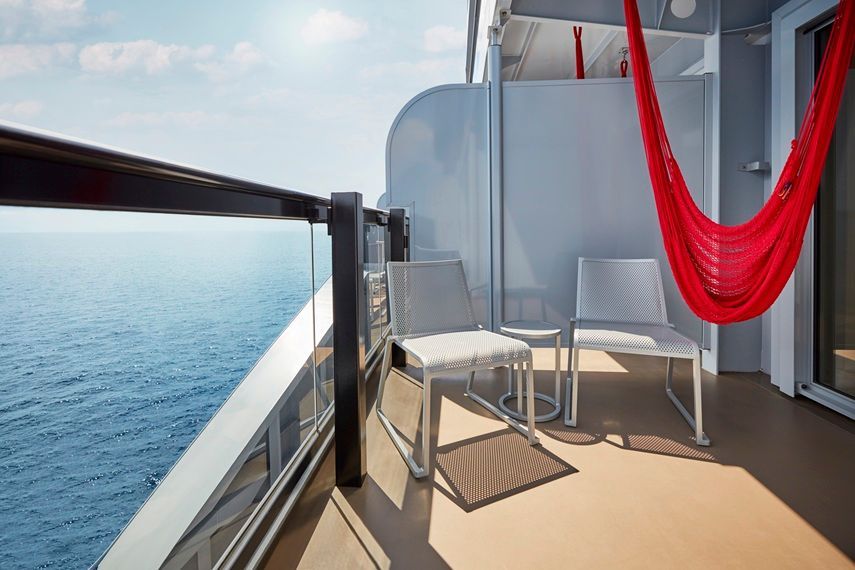
Slide title
Photo courtesy of Virgin Voyages
Button
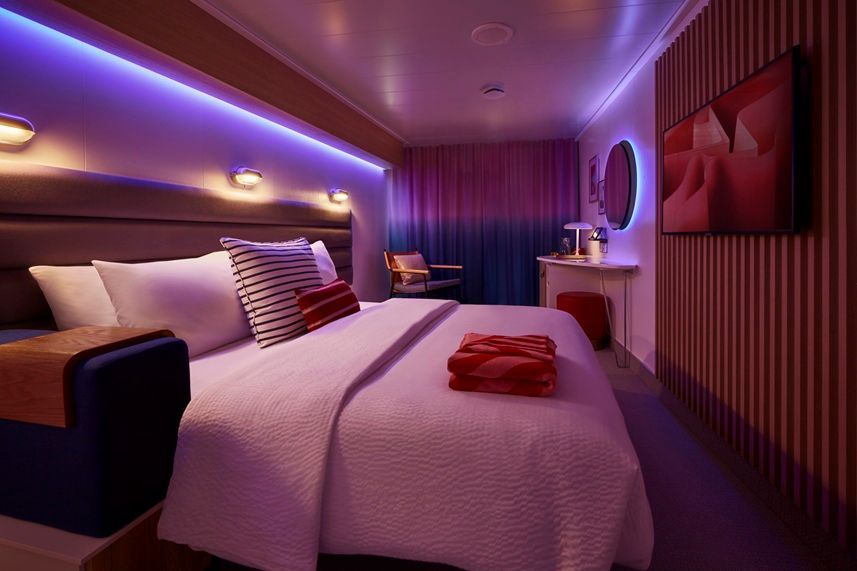
Slide title
Photo courtesy of Virgin Voyages
Button
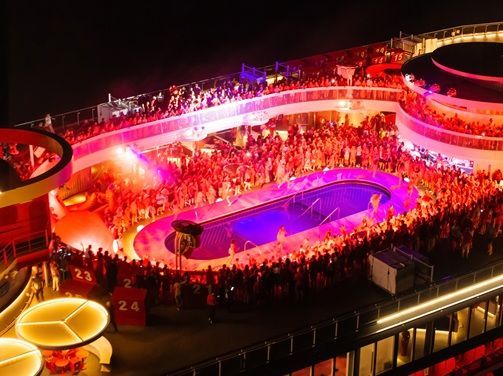
Slide title
Write your caption here
Button
The atmosphere on a cruise ship plays a huge role in shaping your vacation experience, and it’s often the deciding factor when choosing between a mega ship and a smaller ship. Mega ships buzz with energy and excitement. With thousands of passengers onboard, there’s a constant sense of motion and activity. No matter the hour, you’ll find something happening—poolside parties with live DJs, comedy shows that keep crowds laughing late into the night, karaoke competitions, trivia games, or live concerts in sprawling lounges. For families, this lively atmosphere is a huge draw because it means every member, from toddlers to teens to adults, can find entertainment designed just for them. Kids run between water slides and adventure clubs, while parents can soak in the energy of a bustling promenade or enjoy cocktails in a high-energy bar. The vibe is social, fast-paced, and dynamic—perfect for those who thrive in vibrant environments where there’s never a dull moment.
Smaller ships, however, offer a very different ambiance—one defined by calm, connection, and a slower pace. Instead of competing with thousands of other guests for lounge chairs or event seating, you’ll find plenty of quiet spaces to relax. Conversations with fellow passengers often feel more meaningful, with the intimacy of a smaller crowd fostering camaraderie and shared stories. The crew adds to this warmth, often greeting you by name and remembering small details that make you feel valued. Evenings are less about high-energy performances and more about understated elegance. Picture sipping a glass of wine under the stars, listening to a pianist in a cozy lounge, or joining a small group for stargazing on deck. Couples seeking romance, retirees who prefer tranquility, and solo travelers looking for genuine connections often find this environment deeply rewarding.
Ultimately, atmosphere is one of the most important distinctions between the two ship types. If you crave the thrill of big crowds, lively events, and the pulse of constant activity, a mega ship will feel like home. But if you prefer quiet luxury, meaningful connections, and evenings spent in intimate settings, smaller ships provide the perfect retreat.
Entertainment: Non-Stop Action vs. Intimate Experiences
One of the biggest draws of mega ships is their world-class entertainment lineup, which rivals what you’d find in major cities. These floating resorts are designed to keep thousands of guests entertained from sunrise to well past midnight. On any given night, you might find yourself choosing between a Broadway-style production featuring dazzling costumes and choreography, a jaw-dropping ice-skating show performed on an actual rink at sea, or a laugh-filled evening in a comedy club. Add to that live music ranging from jazz quartets to full-scale rock bands, dance parties on the pool deck, karaoke contests, themed nights, and blockbuster movies under the stars, and you quickly realize that mega ships provide a 24/7 entertainment extravaganza. Travelers who love variety and the thrill of having endless options will feel right at home in this high-energy environment. Families, in particular, appreciate that there’s something for every age group, from kid-friendly shows to adult-only performances.
Smaller ships, in contrast, take a more understated but equally rewarding approach to entertainment. Instead of multiple simultaneous shows competing for attention, programming is typically more curated and intimate. You might attend a lecture by a guest historian who brings context to the next port of call, take part in a cooking demonstration that highlights regional cuisine, or enjoy a recital from a string quartet in an elegant lounge. The focus is on enrichment and meaningful engagement rather than spectacle. For many travelers, this slower-paced entertainment style feels more authentic, allowing them to connect with the culture, history, and people of the destinations they’re visiting. Evenings on smaller ships often center around shared conversations, quiet music, or stargazing rather than elaborate productions.
Ultimately, the entertainment style you prefer comes down to personality and travel goals. If you thrive on bright lights, large crowds, and a constant sense of activity, a mega ship will feel like a floating theater district. If you prefer thoughtful enrichment, cultural immersion, and intimate gatherings, smaller ships will give you entertainment that feels both personal and purposeful.
Dining: Variety vs. Exclusivity
Destinations: Major Ports vs. Hidden Gems
Mega ships, as impressive as they are, come with a key limitation: their sheer size restricts where they can dock. Because of their massive dimensions, these floating cities are limited to major ports that can handle the infrastructure demands of thousands of passengers disembarking at once. Popular ports like Miami, Cozumel, Barcelona, and Nassau are frequent stops, as they offer large piers, transportation hubs, and attractions that can cater to huge crowds. While these destinations are lively and well-developed—often brimming with beaches, restaurants, shopping districts, and excursions—they can sometimes feel overcrowded, particularly when multiple mega ships arrive on the same day. For travelers who want convenience, familiar amenities, and plenty of shore excursion options, mega ships make these bustling hubs easily accessible. However, those seeking authenticity or quieter escapes may find the experience less personal, with lines and crowds becoming part of the package.
Smaller ships, by contrast, have a distinct advantage when it comes to accessing destinations. Their modest size allows them to dock in boutique ports, hidden harbors, and less-traveled waterways that remain out of reach for larger vessels. Imagine stepping off your ship into a quaint Mediterranean fishing village where only one ship docks at a time, exploring a remote Caribbean island untouched by mass tourism, or sailing gracefully through the narrow arms of a Norwegian fjord where breathtaking cliffs rise dramatically on either side. Expedition vessels take this even further, reaching places like Antarctica, the Galápagos Islands, or Alaska’s inside passages—destinations where smaller groups mean greater environmental sustainability and more immersive exploration. On these ships, itineraries are often designed with cultural depth in mind, giving passengers the chance to engage with local traditions, cuisine, and history in ways that mega-ship travelers rarely experience.
For travelers who enjoy lively tourist hubs with lots of amenities, mega ships provide reliable access to some of the world’s most famous ports. But for those seeking unique, off-the-beaten-path experiences and the chance to feel like true explorers, smaller ships offer a far richer and more personal way to see the world.
Cost: Budget-Friendly Options vs. Premium Pricing
Family Friendliness: Kid-Friendly Giants vs. Adult-Focused Retreats
LGBTQ+ Travelers: Inclusivity on the Seas
For LGBTQ+ travelers, the choice between a mega ship and a smaller ship can also influence how welcoming and comfortable the overall experience feels. Mega ships are often celebrated for their inclusivity, hosting Pride-themed sailings, LGBTQ+ meetups, and diverse entertainment. Larger ships also provide more anonymity, which can feel reassuring for those who prefer blending into a big crowd while still finding like-minded communities onboard. These ships frequently attract a wide mix of passengers, making them a lively choice for travelers who enjoy socializing within inclusive spaces.
Smaller ships, while more intimate, can offer personalized service and strong community connections. Luxury lines and specialty LGBTQ+ charters often use smaller ships to create curated experiences that focus on safe, affirming spaces where travelers can truly relax. With fewer guests onboard, it’s easier to build relationships and feel part of a close-knit group. Smaller ships also reach niche destinations, giving LGBTQ+ travelers the chance to explore culturally rich places with guides who understand the importance of inclusivity and safety.
Ultimately, LGBTQ+ travelers should consider whether they prefer the vibrant diversity of a large ship or the intimacy and tailored experiences of a smaller vessel. Both options can provide welcoming environments—it just depends on whether you’re seeking energetic nightlife and variety, or a boutique experience that emphasizes connection and community.
Final thoughts
When it comes to mega ships versus smaller ships, there’s no one-size-fits-all answer. Both offer incredible experiences but cater to different types of travelers. The key is to be honest about your priorities—whether it’s entertainment, budget, intimacy, or destinations—and choose accordingly.
No matter which path you take, cruising remains one of the most versatile and rewarding ways to see the world. With the ocean as your highway and new horizons awaiting, the real win is finding the cruise that makes you feel right at home—whether that’s on a massive floating city or a cozy, intimate ship sailing into hidden harbors.
Contact us today to explore what may be right for you!

